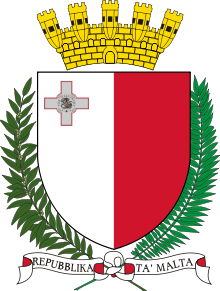- Palm branch (symbol)
-
A palm branch (or palm frond or palm stem), usually refers to the leaves of the Arecaceae (sometimes known by the names Palmae).
The palm branch was a symbol of triumph and victory in pre-Christian times. The Romans rewarded champions of the games and celebrated military successes with palm branches. The motto of Lord Nelson is "Palmam qui meruit ferat", which means in Latin, "Let him bear the palm who has deserved it" and has been adopted by numerous other organizations including the University of Southern California. Jews follow a similar tradition of carrying palm branches during festive times.[1]
Contents
Christianity
Early Christians used the palm branch to symbolize the victory of the faithful over enemies of the soul, as in the Palm Sunday festival celebrating the triumphal entry of Jesus into Jerusalem. In Christian art, martyrs were usually shown holding a palm frond as an attribute, representing the victory of spirit over flesh, and it was widely believed that a picture of a palm on a tomb meant that a martyr was buried there.[2]
Origen calls the palm (In Joan., XXXI) the symbol of victory in that war waged by the spirit against the flesh. In this sense it was especially applicable to martyrs, the victors par excellence over the spiritual foes of mankind; hence the frequent occurrence in the Acts of the martyrs of such expressions as "he received the palm of martyrdom." On 10 April 1688 it was decided by the Congregation of Rites that the palm when found depicted on catacomb tombs was to be regarded as a proof that a martyr had been interred there. Subsequently this opinion was acknowledged by Mabillon, Muratori, Benedict XIV and others to be untenable; further investigation showed that the palm was represented not only on tombs of the post-persecution era, but even on pagan tombs.
The general significance of the palm on early Christian monuments is slightly modified according to its association with other symbols (e.g., with the monogram of Christ, the Ichthus (Fish), or the Good Shepherd). On some later monuments the palm was represented merely as an ornament separating two scenes. Palms also represented heaven, evidenced by ancient art often depicting Jesus in heaven among palms.
Judaism
In Judaism, the date palm (Lulav) is one of the Four Species used in the daily prayers on the feast of Sukkot. It is bound together with the hadass (myrtle), and aravah (willow). The Midrash[3] notes that the binding of the Four Species symbolizes our desire to unite the four "types" of Jews in service of God.
In the 1970s, Judean date palm seeds (believed to be 2000 years old) were recovered during excavations at Herod the Great's palace on Masada in Israel . In 2005, some of the seeds were planted. One grew and has been called "Methuselah". If it is female, it will bear fruit.
Islam
Muhammad is said to have built his home out of palm, and the palm symbolizes rest and hospitality in many cultures of the Middle East. The first muezzin climbed palm trees to call the faithful to prayer, from which the minaret developed.
Other religions
The sacred tree in Assyrian mythology is a palm that symbolizes Ishtar connecting heaven, the crown of the tree, and earth, the base of the trunk. Palm stems represented long life to the Ancient Egyptians, and the god Huh was often shown holding a palm stem in one or both hands. The Kingdom of Nri (Igbo) used the "omu", a tender palm frond, to sacralize and restrain. The palm tree was a sacred sign of Apollo in Ancient Greece because he had been born under one in Delos[4]. In ancient Mesopotamia, the date palm may have represented fertility in humans. The Mesopotamian goddess Inanna, who had a part in the sacred marriage ritual, considered herself the one who made the dates abundant.[5]
Modern usage
Today, the palm, especially the coconut, remains a symbol of a tropical island paradise[6]. Palms appear on the flags and seals of several places where they are native, including those of Malta, Haiti, Paraguay, Guam, Florida, Poland, Australia and South Carolina. It also appeared on the flag of the short-lived Tripolitanian Republic (1918–1923), though not followed in later Libyan flags.
The palm branch symbol is included in MUFI: ⸙ (2E19, ‘PALM BRANCH’ in Unicode).
See also
References
- ^ Palm Sunday according to the Byzantine Rite Tradition
- ^ Catholic Encyclopedia: Palm in Christian Symbolism
- ^ Vayikra Rabbah 30:12.
- ^ Palm Tree Symbolism
- ^ Sex Life of the Date University of Pennsylvania Museum of Archaeology and Anthropology
- ^ Virtual Palm Encyclopedia - Introduction
Categories:- Symbols of Abrahamic religions
- Palms
Wikimedia Foundation. 2010.




